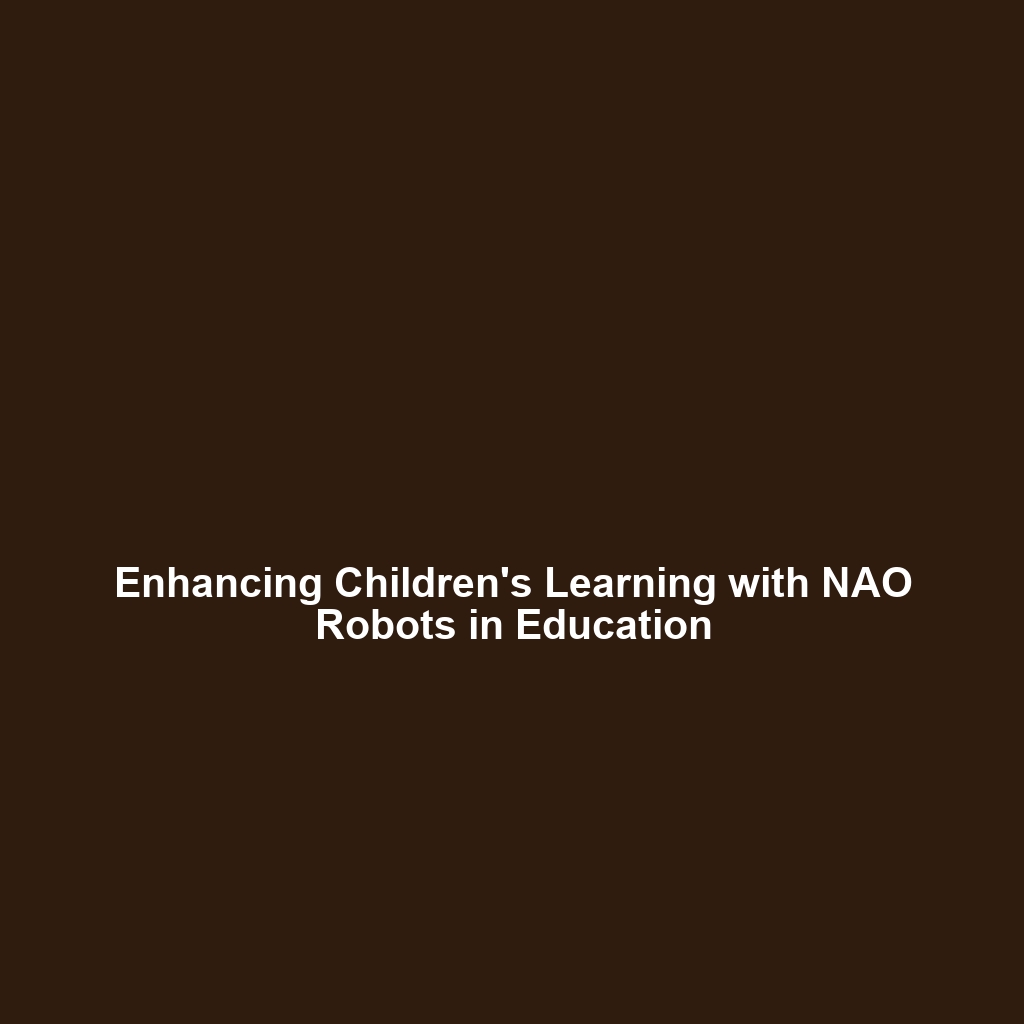Use of Robots like NAO in Interactive Learning Environments for Children
Introduction
The integration of robots like NAO in educational settings is transforming interactive learning environments for children. As humanoid robots become increasingly capable, they offer unique opportunities for enhancing engagement and personalized learning experiences. The significance of NAO robots lies in their ability to facilitate interactive education, encourage collaboration, and support diverse learning styles, making them an invaluable asset in classrooms today. This article delves into how robots like NAO play a crucial role in this evolving landscape of education and technology.
Key Concepts
Understanding Humanoid Robots
Humanoid robots are designed to simulate human behavior and interactions. The NAO robot, developed by SoftBank Robotics, exemplifies this design by incorporating features such as voice recognition, expressive gestures, and a range of programming capabilities. These attributes allow NAO to engage with children effectively, adapting to various learning scenarios and styles.
Interactive Learning
Interactive learning emphasizes engagement and participation, making it vital for developing critical thinking and problem-solving skills among children. NAO robots support this by providing hands-on experiences that combine technology with educational content, fostering a truly immersive learning environment.
Applications and Real-World Uses
Robots like NAO have been implemented in various educational contexts, proving their effectiveness as teaching aids:
- STEM Education: NAO promotes interest in science, technology, engineering, and mathematics (STEM) through interactive lessons.
- Language Learning: The robot can engage children in language exercises, helping them practice pronunciation and conversational skills.
- Social and Emotional Learning: NAO assists in developing empathy and social skills by modeling appropriate interactions.
These applications underscore how the use of NAO robots in interactive learning environments enriches the overall educational experience.
Current Challenges
Despite the advantages, there are challenges associated with the use of robots like NAO in educational settings:
- Cost: The purchase and maintenance of humanoid robots can be prohibitively expensive for some educational institutions.
- Training: Educators must be trained to effectively incorporate robots into their teaching practices.
- Technological Limitations: Dependence on technology can sometimes hinder the educational process when technical issues arise.
Addressing these hurdles is essential for maximizing the impact of NAO robots in classrooms.
Future Research and Innovations
Research into the future of humanoid robots like NAO continues to evolve. Innovations are focusing on:
- Enhanced AI capabilities for more intuitive interactions with students.
- Development of specialized software to tailor learning experiences to individual needs.
- Integration with virtual and augmented reality for hybrid learning environments.
These advancements promise to further improve the efficacy of robots in educational contexts and reshape the future of learning.
Conclusion
The use of robots like NAO in interactive learning environments for children represents a significant leap forward in education technology. As these humanoid robots become more prevalent, they offer transformative experiences that enhance engagement, personalize learning, and prepare children for a technology-driven future. For educators looking to integrate innovative tools in their curriculum, exploring NAO robots is a decisive step. Learn more about the latest advancements in humanoid robotics and their implications for education.
